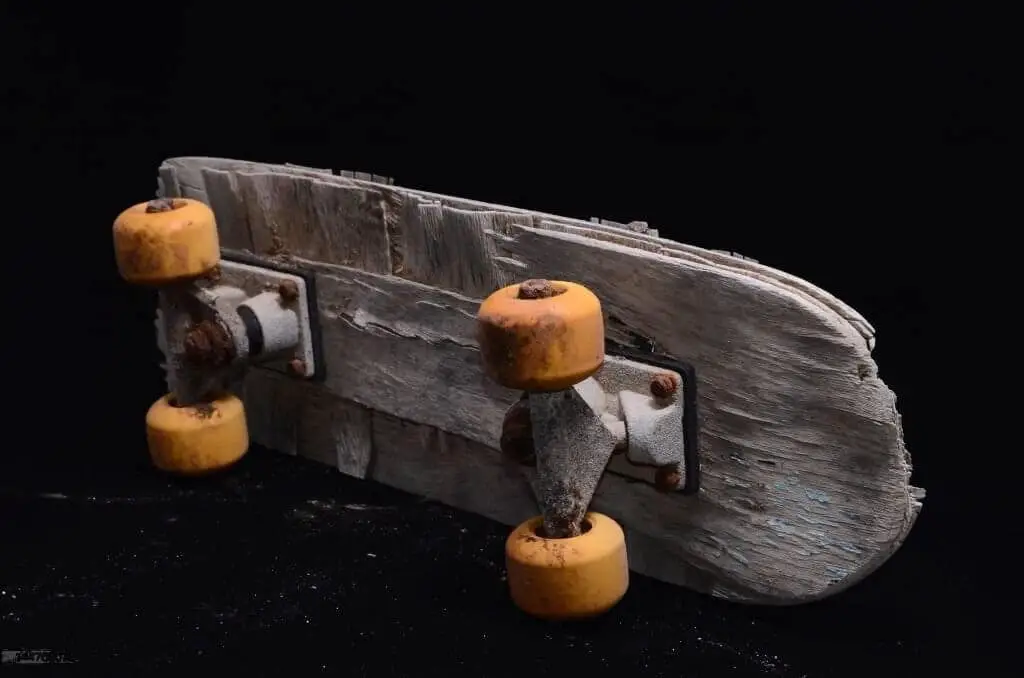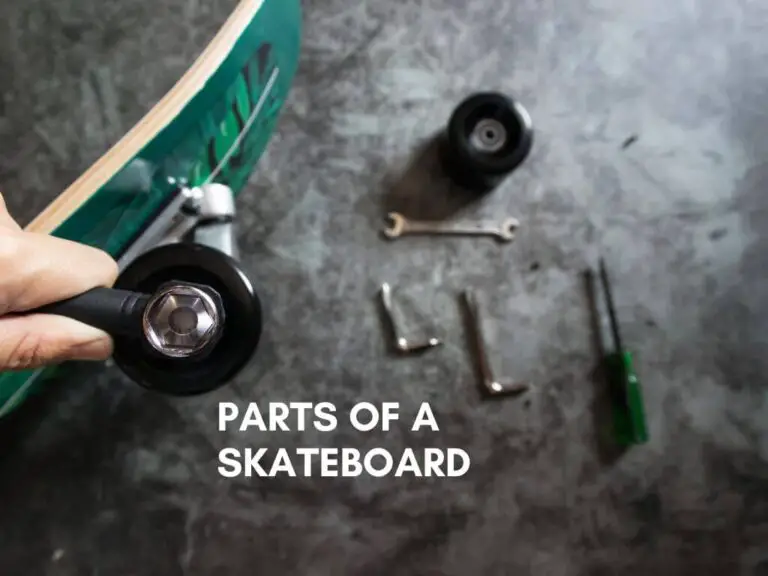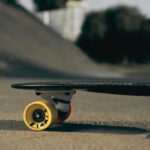Skateboarding is all about the thrill of riding, mastering tricks, and enjoying the freedom on four wheels. But over time, even the best boards can start to show signs of wear and tear. If you’re a regular skateboarder, you may find yourself wondering, “When should I get a new skateboard?”
Whether you’re an experienced rider or a beginner, knowing when it’s time to replace your board is essential for both your safety and performance. In this article, we’ll break down everything you need to know about when to upgrade your skateboard—from spotting signs of wear to choosing the right moment for an upgrade. Let’s dive in and make sure you’re riding with confidence and style!
Signs Your Skateboard Needs Replacing
Your skateboard might not talk, but it definitely gives you signs when it’s nearing the end of its lifespan. Here are some key indicators that suggest it’s time to say goodbye to your current board and invest in a new one.
Deck Wear and Tear
The deck is the heart of your skateboard. Over time, it can start to show significant wear, which affects both your safety and performance.
- Cracks or Splinters: Cracks in your deck can quickly lead to breaks, especially if you’re landing tricks with force. Even small splinters can compromise the integrity of the board and increase the chances of a sudden snap mid-ride.
- Water Damage: If your board has been exposed to moisture—whether from rain or puddles—the wood can weaken and soften. This results in a deck that feels mushy or soggy, affecting your ability to pop tricks and maintain control.
- Loss of Pop: One of the most noticeable signs of a worn-out deck is the loss of “pop.” If you’ve been struggling to perform tricks that you used to land with ease, your deck might have lost its springiness and responsiveness.
- Chipped Edges: Chipped or damaged edges don’t just look bad; they also affect the structure of your deck. Over time, chipped areas can spread and cause more serious cracks or breaks.
Worn-Out Grip Tape
Grip tape is essential for keeping your feet firmly planted on the board, especially when performing tricks. However, with frequent use, it tends to wear down.
- Smooth Grip Tape: If you notice your feet slipping more often or find that your grip is less effective, it could be due to worn-out grip tape. Over time, the grit on the tape wears smooth, making it harder to maintain control.
- Impact on Control and Stability: Poor grip affects not only your tricks but also your general riding stability. Slippery grip tape can make even basic rides feel more challenging.
- How to Check Your Grip Tape: Run your hand over the surface of the tape. If it feels smooth in places where it used to feel gritty, it’s time to consider a replacement.
Wheel Wear
Your wheels are in constant contact with the ground, so it’s no surprise that they wear down over time.
- Flat Spots: Flat spots are the bane of every skater’s ride. They form when you skid or slide your wheels, creating uneven surfaces that make your ride less smooth and much noisier.
- Uneven Wear: It’s common for wheels to wear unevenly if you favor one foot or use certain tricks more than others. Uneven wheels can make pushing harder and create a wobbling effect when riding.
Trucks Damage
Trucks are the backbone of your skateboard, connecting your wheels to the deck and allowing you to turn and balance. Like any other part, they don’t last forever.
- Loose or Wobbly Trucks: If your trucks feel loose or wobbly and tightening them doesn’t help, it could be a sign that they’re wearing out. Worn-out bushings or bent kingpins may be the culprits.
- Damaged Bushings or Axle Threads: Cracked bushings or worn-out axle threads are common signs that your trucks need replacing. Without properly functioning trucks, your skateboard’s performance can drastically drop.
Worn Bearings
Bearings play a key role in keeping your wheels spinning smoothly. But over time, they can wear out, leading to a rougher, noisier ride.
- Signs of Worn-Out Bearings: If you notice that your skateboard isn’t as fast as it used to be, or if your ride feels rough and clunky, your bearings might be the issue. Rust, dirt, or damage can cause your bearings to lose their smoothness.
- Cost-Effective Solution: The good news is that replacing bearings is generally more affordable than replacing your entire board. If everything else on your skateboard is in good condition, new bearings can give your ride a fresh start.
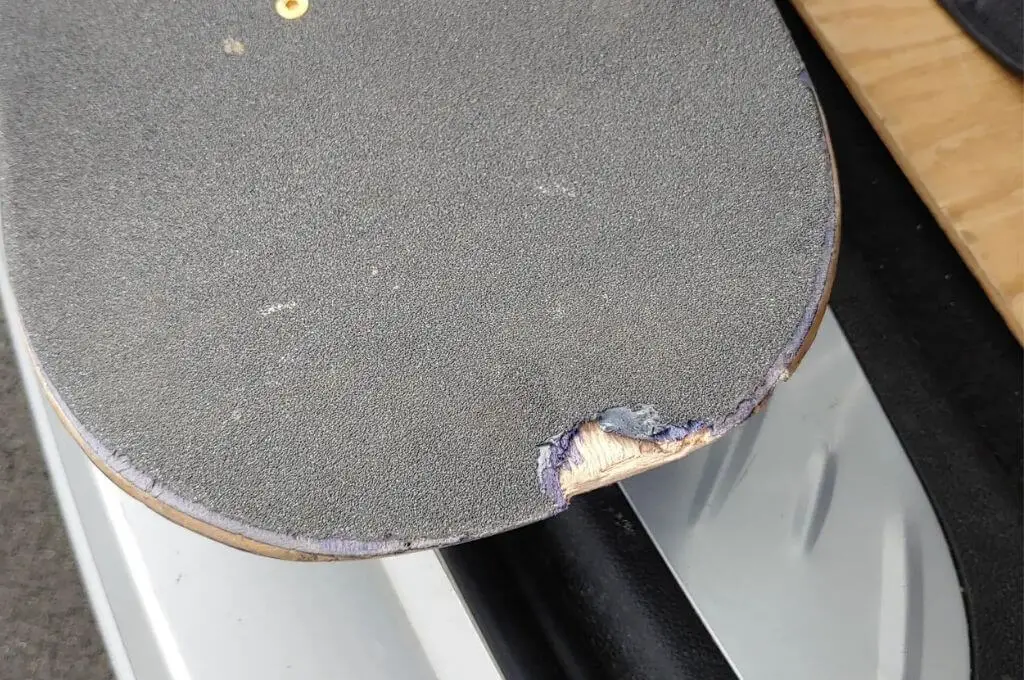
How Long Does a Skateboard Last?
Understanding the lifespan of your skateboard is crucial for planning when to replace it. Several factors can influence how long your board will last, including your riding frequency, style, and the conditions in which you skate.
- Frequency of Use: If you skate daily, your board will naturally wear out more quickly than if you only ride occasionally on weekends. Casual skaters might find their boards lasting several months to a year, while daily skaters may need to replace theirs every few weeks or months.
- Riding Style: The type of skateboarding you do can significantly impact your board’s lifespan. Street skaters who perform tricks and grind on rails may see faster wear and tear compared to park skaters, who often ride smoother surfaces. Additionally, aggressive tricks like flips and grinds place more stress on the deck, wheels, and trucks.
- Environmental Conditions: If you often skate in wet or muddy conditions, or if your board is exposed to extreme heat or cold, it can deteriorate faster. Moisture can weaken the deck, while heat can cause wheels and bearings to warp.
- Average Lifespan of Components:
- Deck: Typically lasts 1-3 months for heavy skaters, longer for casual riders.
- Wheels: May last around 2-6 months, depending on the type of terrain you skate.
- Trucks: Can last several months to years, depending on usage and care.
- Bearings: Usually last 3-12 months, but can wear out faster in dirty conditions.
- Tips for Extending Skateboard Life:
- Regular Cleaning: Keep your board clean and free of dirt and debris to maintain performance.
- Proper Storage: Store your skateboard in a cool, dry place to prevent moisture damage.
- Avoiding Water: Try to avoid riding in wet conditions, as water can damage the deck and bearings.
When Upgrading is Better Than Repairing
Knowing when to repair versus when to replace your skateboard is essential for maintaining optimal performance.
- Repairs Aren’t Enough: If your deck has multiple cracks, or if your trucks are bent beyond repair, investing in a new board may be the best option. Trying to patch up a severely damaged board can lead to more significant issues later on, such as unexpected breaks while riding.
- Enhanced Experience with a New Board: A new skateboard can significantly enhance your riding experience. Advances in skateboard technology mean newer boards often come with improved materials and designs that make riding smoother and more enjoyable.
- Different Signs for Beginners vs. Experienced Riders: Beginners may not notice the subtle signs of wear and tear as quickly as more experienced skaters. Experienced riders will have a better feel for their board and recognize when it’s hindering their performance. If you’re a beginner, it’s helpful to have an experienced friend help assess your board’s condition regularly.
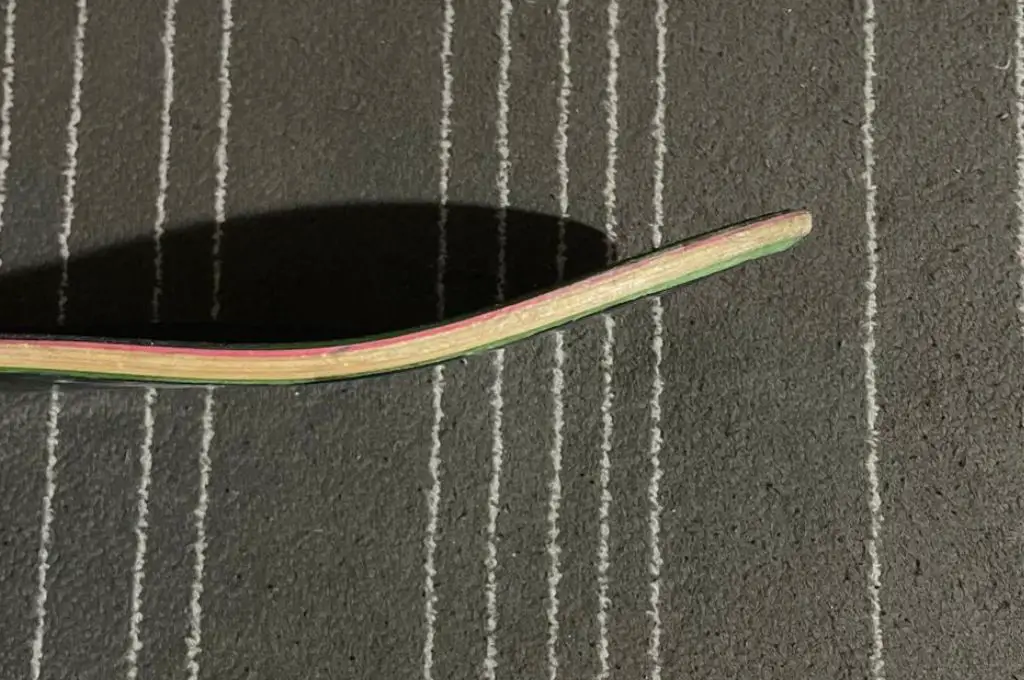
Choosing the Right Time for a New Skateboard
Timing is everything when it comes to purchasing a new skateboard. Here are some factors to consider for the perfect moment to upgrade:
- Personal Performance Goals: If you’re looking to learn new tricks or improve your skills, a new skateboard can provide the stability and responsiveness you need. A worn-out board may hold you back, making it harder to progress.
- Seasonal Considerations: While you can skate year-round, certain seasons may be better for making a purchase. For instance, you might find better deals during the winter months when demand decreases, or right before the summer season when skateboarding becomes more popular.
- Budget Tips: Always keep an eye out for sales and discounts at local skate shops or online retailers. Many stores offer seasonal sales or clearance events that can help you snag a quality skateboard at a more affordable price.
Sustainable Skateboarding: What to Do With Your Old Board
When it’s time to retire your old skateboard, consider eco-friendly options for disposal or repurposing.
- Eco-Friendly Options: Don’t just toss your old skateboard in the trash! Many organizations accept donations of old boards for those in need. Alternatively, some local skate shops may recycle or refurbish old boards.
- Creative Repurposing: If you’re feeling crafty, consider turning your old deck into something new. DIY projects can include creating wall art, furniture, or even using the wood for other creative endeavors. There are plenty of tutorials available online to inspire your next project.
Conclusion
Knowing when to replace your skateboard is crucial for ensuring your safety and enhancing your riding experience. Regular inspections and an understanding of the signs of wear and tear can help you make informed decisions about upgrading your gear.
So, take a moment to assess your current skateboard. Are there cracks in the deck? Is your grip tape smooth? If you notice any of these signs, it may be time to invest in a new ride. Keep your skateboard in good shape, and you’ll be able to enjoy the freedom and excitement of skating for years to come. Happy skating!
FAQ’s-
How do I know if my skateboard deck is good?
A good skateboard deck is sturdy, responsive, and feels comfortable underfoot. Look for high-quality materials, proper construction, and a size and shape that suits your riding style. Ride it and see how it feels! If it’s responsive, has good pop, and feels comfortable, then you’ve found a winner.
How do I determine the right deck size for me?
Choose a deck size based on your shoe size and skating style. Smaller decks (7.5″ – 8″) are suitable for street and technical tricks, while larger decks (8″ and above) offer stability for ramps and vert skating.
Why Replacing a Skateboard Deck Is Important
Safety: A worn-down or damaged skateboard deck can be more likely to break or crack, which can lead to falls and injuries.
Performance: A new skateboard deck will be stiffer and more responsive, which can improve your skating performance.
Comfort: A new skateboard deck will be more comfortable to ride, as it will not have any sharp edges or worn-down areas.
Style: A new skateboard deck can give you a fresh look and feel, which can be motivating to keep skating.
How do I know when I need a new skateboard?
Here are some signs that you need a new skateboard:
Your deck is cracked, chipped, or splintered.
Your deck feels soft or spongy.
Your trucks are bent or rusty.
Your wheels are worn down or cracked.
Your bearings are rusty or noisy.
Your skateboard is no longer responsive or fun to ride.
How many years does a skateboard last?
The lifespan of a skateboard varies depending on a number of factors, including how often you skate, where you skate, what kind of tricks you do, and your weight and skating style. However, on average, a skateboard deck will last between 2 and 4 months.
If you skate regularly and do a lot of difficult tricks, your skateboard may wear out more quickly. If you skate less often and do more basic tricks, your deck may last for a year or more.
How do you tell if your skateboard has lost its pop?
Here are some signs your skateboard’s “pop” has gone flat:
Muffled ollies: New decks snap, old ones thud. Listen for a dull sound.
Lower jumps: Tricks feel sluggish, you struggle to reach usual heights.
Soggy feel: Board bends more under your weight, losing responsiveness.
Pressure cracks: Lines across the deck’s nose and tail hint at internal wear.

